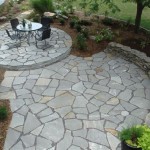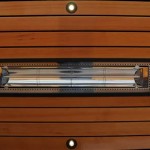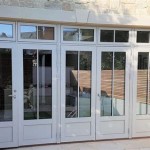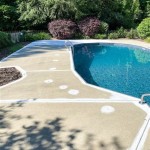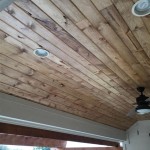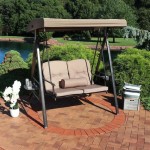Choosing The Right Sliding Patio Door Rollers Replacement Parts
Sliding patio doors offer a seamless transition between indoor and outdoor spaces, enhancing natural light and accessibility. However, the smooth operation of these doors relies heavily on the condition of their rollers. Over time, these rollers can wear out, corrode, or break down, leading to difficulty in opening and closing the door. Replacing worn or damaged rollers is crucial for maintaining the functionality and lifespan of a sliding patio door. Selecting the correct replacement parts is paramount to ensuring a smooth and lasting repair. This article outlines the key considerations when choosing replacement rollers for sliding patio doors.
Identifying the Correct Roller Type and Size
The first step in choosing replacement rollers is to accurately identify the type and size required for the specific patio door. Patio doors from different manufacturers, and even different models from the same manufacturer, often use different roller assemblies. Simply guessing or assuming compatibility can lead to purchasing the wrong parts, resulting in wasted time and money, and potential damage to the door frame or track.
A visual inspection of the existing rollers is essential. Examining the broken or worn roller assembly can provide clues about its type and construction. Note the material of the roller (e.g., steel, nylon, brass), the wheel diameter and width, and the overall dimensions of the housing or bracket. Specific characteristics such as the presence of adjustment screws, the type of screw head, and any unique features of the roller carriage should be carefully observed. It is also important to determine the type of bearing used in the roller assembly, as this affects the smoothness and durability of the roller. Common bearing types include ball bearings, needle bearings, and plain bearings.
If the original rollers are heavily damaged or completely missing, identifying the correct replacement part can be more challenging. In such cases, consulting the door manufacturer's documentation or website is highly recommended. Many manufacturers provide detailed parts lists and diagrams for their products. If the documentation is unavailable, contacting the manufacturer directly with the door's model number and any other identifying information can help in obtaining the correct part number or specifications.
Taking accurate measurements is crucial to ensure a proper fit. Use a caliper or ruler to measure the diameter and width of the roller wheel, the overall height and width of the roller assembly, and the distance between mounting holes. These measurements will help narrow down the selection of replacement rollers and prevent the purchase of incompatible parts. When measuring the roller assembly height, it is important to account for any adjustment range the roller may have. Many rollers have adjustment screws that allow the door height to be fine-tuned. Ensure the replacement roller has a similar adjustment range to maintain proper door alignment.
Photography can also aid in identifying the correct roller. Take clear, well-lit photos of the existing rollers from multiple angles. These photos can be compared to images of replacement rollers online or in catalogs to visually confirm compatibility. Sharing these photos with a hardware professional or online forum can solicit expert advice and recommendations.
Selecting High-Quality Materials and Construction
The longevity and performance of replacement rollers depend significantly on the quality of the materials used in their construction. Opting for rollers made of durable, corrosion-resistant materials is essential for ensuring a lasting repair. Compromising on quality to save money can lead to premature failure and the need for frequent replacements.
Steel rollers are a common choice, offering good strength and durability. However, standard steel rollers are susceptible to rust and corrosion, especially in coastal environments or areas with high humidity. Look for steel rollers that have been treated with a corrosion-resistant coating, such as zinc plating or powder coating. Stainless steel rollers offer excellent corrosion resistance but are typically more expensive. The decision between steel and stainless steel depends on the environmental conditions and the desired lifespan of the rollers.
Nylon rollers are another popular option, offering smooth and quiet operation. Nylon is a durable plastic that is resistant to wear and tear. However, not all nylon rollers are created equal. The quality of the nylon material can vary significantly, affecting the roller's strength and resistance to deformation. Look for nylon rollers made of high-density nylon or reinforced nylon for increased durability. Avoid rollers made of low-quality or brittle plastic, as these are more likely to crack or break under load.
The type of bearings used in the roller assembly also plays a crucial role in its performance. Ball bearings are a common choice, offering smooth and efficient operation. Look for ball bearings that are sealed or shielded to protect them from dirt and debris. Sealed bearings are lubricated and sealed to prevent contamination, while shielded bearings have a metal shield that protects the bearing from external elements. Needle bearings offer increased load capacity and are often used in heavier doors. Plain bearings are the simplest and least expensive type of bearing, but they are not as smooth or durable as ball or needle bearings.
The construction of the roller assembly is also important to consider. Look for rollers with a sturdy and well-designed housing or bracket. The housing should be made of a durable material that can withstand the weight and stress of the door. The mounting hardware should be strong and secure to prevent the roller from coming loose or failing prematurely. Inspect the roller assembly for any signs of weakness or poor workmanship. Avoid rollers with loose or wobbly components, as these are likely to fail quickly.
Considering Additional Features and Compatibility
Beyond the basic requirements of size, material, and construction, consider any additional features that might enhance the performance or convenience of the replacement rollers. Also, double-check the compatibility of the rollers with the existing door hardware and track system.
Adjustable rollers are a valuable feature, allowing for fine-tuning of the door height and alignment. This is particularly useful for doors that have settled over time or are slightly out of square. Adjustable rollers typically have screws that can be turned to raise or lower the door, ensuring a smooth and even fit. When selecting adjustable rollers, ensure that the adjustment mechanism is robust and easy to use. Avoid rollers with flimsy or difficult-to-access adjustment screws.
Self-lubricating rollers are another convenient feature. These rollers have built-in lubrication systems that continuously lubricate the bearings, reducing friction and wear. Self-lubricating rollers require less maintenance than traditional rollers and can extend the lifespan of the door. However, it is important to note that no roller is entirely maintenance-free. Regularly cleaning the track and rollers is still recommended to remove dirt and debris.
Compatibility with the existing door track and hardware is crucial. Ensure that the replacement rollers are designed to fit the specific type of track used in the patio door. Some tracks have a U-shaped groove, while others have a V-shaped groove. The roller wheel should match the shape of the track to ensure smooth and stable operation. Also, check that the mounting holes on the roller assembly align with the mounting holes on the door frame. If the mounting holes do not align, it may be necessary to drill new holes, which can weaken the door frame.
Consider the weight capacity of the replacement rollers. Patio doors can be quite heavy, especially those with insulated glass. Ensure that the rollers are rated to support the weight of the door. Overloading the rollers can lead to premature failure and damage to the door frame. If unsure about the weight of the door, consult the door manufacturer's documentation or website. Generally, it is better to overestimate the weight capacity of the rollers than to underestimate it.
Finally, consider the ease of installation. Some rollers are easier to install than others. Look for rollers that come with clear and detailed installation instructions. If unsure about the installation process, consider hiring a professional to install the rollers. Incorrect installation can damage the door frame or track and may void the warranty on the rollers.

How To Choose The Right Sliding Door Roller System

How To Identify Patio Door Rollers

200 Series Narroline Gliding Patio Door Parts Diagram

Perma Shield Gliding Patio Door Parts Diagram

3 Ways To Adjust Sliding Glass Door Rollers Wikihow

Handle Set And Lock Introduction Selection Guide

Discover Why Choosing The Right Garage Door Rollers Matters

Patio Door Hardware Features Options Pella

400 Series Frenchwood Patio Door Parts Diagram

Exploring Sliding Patio Door Configurations Options Styles Bayview Windows
Related Posts

